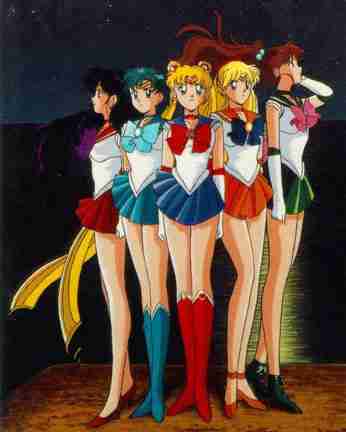 |
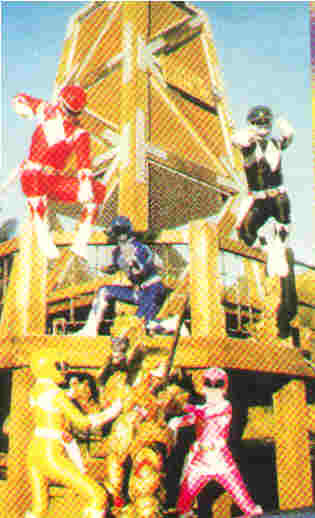 |
 |
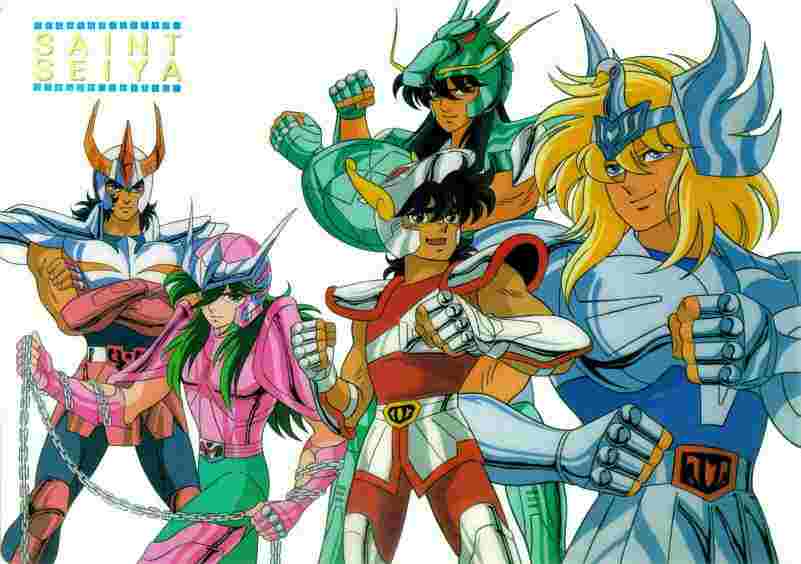 |
Human beings have always tried to explain
the world around them and their own inner world through symbols. We have
a great need to group things we perceive into categories of objects and
sensations according to common traces. That is why we know all dogs belong
to the same species, even if they have characteristics so different as
those of a Pinscher or a Collie. Likewise, we associate to our concept
of "dog" all traces of behavior that we observe in or project into it,
such as fidelity or subservience.
We also tend to observe that other animals
or even human beings also have such characteristics and thus the concept
of "dog" can become a metaphor for a loyal or subservient human being.
If we compare a person to a dog, we do not need to explain anymore that
we think this person has some characteristics that are similar to the ones
of a dog. When metaphors incorporate to a culture, they are called symbols.
The whole process of metaphoric reasoning can get lost with the passing
of time, so that today we very often do not know any longer why such images
were chosen to stand for other things.
Symbols usually aggregate and contrive a lot of information in a very concentrated way. They are therefore largely used to transmit subliminally messages that transcend/complete those of the words (or, in the case of manga and anime, the pictures). We have already seen, on the pages about the importance of drawing , how it can transmit messages about the characters' personality and feelings (if you hadn't read it yet or want to review it, go to the page about drawing by clicking here). In this "chapter" we will present some implications of the use of colors and numbers in manga and anime.
Unfortunately (or fortunately!) the theme is so vast that it will not be possible to do more than just tempt your curiosity, dear Web traveler, by quoting some random examples from some well known series. Colors and numbers are some of the most powerful symbols in most cultures. Something magical has always been attributed to them: many people believe that the number 13 attracts bad luck or that wearing white clothes brings peace. There are specialists about the subject, who are integrally dedicated to its study. However, if symbols themselves may be universal, the meaning attached to them varies according to each culture and many effects get lost when they are presented to a public who does not share their cultural background. And since the meaning of symbols is no exact science and I am neither occultist nor numerologist, maybe you will not agree to some of my interpretations or even know about others for the elements I am going to discuss. If that is the case, please let me know about it so that I can enrich this page (and my mind) with this knowledge.
But let's get to the point!
There are many examples of significant numbers in manga and anime. Some are motivated by other symbols or legends, such as the twelve Golden Saints in Saint Seiya (one for each sign of the Western Zodiac). But even in Saint Seiya what really matters are the adventures of Seiya and his companions, which are a very good example for one of the most recurrent numbers in such series: the group of five heroes.
Fans of manga and anime can
almost recognize a series category that we could call "five heroes and
a mission". We could name several of them here: starting with Saint
Seiya, we also have Sailor Moon, Ronin Warriors, Shurato
(counting Lakeshi), Yuusuke?s Team during the tournament in Yu Yu Hakusho
(Poltergeist Report), Gundam Wing, Bakuretsu Hunter,
Power
Rangers, Changemen, Flashmen... Well, you can complete
the list with many others. The important thing is that, when there is a
group of heroes or main characters, they usually are five and not two,
six, twelve or fifteen ? although groups of five are not the only ones
to appear, they are surely the most common. And there is a good reason
for that.
 |
 |
 |
 |
FIVE: Union
The number five can be seen as the union of the first even number (2) and the first uneven one greater than one (3). Thus, the number five stands for synthesis and union. The greatest trump of such groups of characters is their "team work", their ability in acting as a sole being, although each member retains his/her individuality and function within the group. Such harmony is the Japanese receipt for succeeding: to drop individualistic thinking in benefit of the group, without ignoring the characteristics of each member, his/her abilities and shortcomings, and give each one the opportunity to act in accordance with his/her forces (this is very clear in the conflicts among the children in Digimon, although not in a five member group).
Still about the possibilities
of analysis for number five, we can see it as the union of the numbers
four (usually related to the Earth and to mankind) and one (the unity,
the number of God). We thus have the internal hierarchy of such groups:
four "supporting characters" and one leader. The leader is clearly the
one who has the greatest physical and/or moral power, but he also has the
greatest responsibility: he must care for the union and integrity of the
group, take decisions and distribute the tasks. If the laurels of victory
belong to him (even when it results from the efforts of others) his is
also the responsibility for the errors and defeats of the group, even if
he was not the one to cause them. Japanese hierarchy is rigid and implacable,
but it also sees to it that everyone knows exactly what he/she is supposed
to do within his/her limits. The leader is vital for the group to function
well, and this can only happen when his leadership is integrally recognized
by the group: this usually is achieved after a period of conflicts during
which he shall prove to the others his capacity in conducting the group
as a harmonic whole.
Number five is also associated to the pentagram, or five pointed star (I
know this picture is not a real pentagram, but I am not crazy to put such
a powerful figure on my page!). We can see that it clearly presents a base
and a peak, standing for a harmonic and dynamic construction. The internal
hierarchy of the five character groups can also be recognized in the pentagram:
there is a leader, the "peak" of the pentagram, and two other characters
of great power who, although less powerful than the leader, are practically
equals. These two, like the "arms" of the pentagram, point to different
directions and usually assist the leader in his/her decisions: one very
often acts as a "councilor" and the other as "opposition" to the leader.
These conflicting opinions give the leader different points of view which
will help him to choose the right action for each situation, not as an
individual, but as the result of a common effort.
Finally, there are two other
elements that form that base. These characters usually do not interfere
directly in the decisions of the leader, but they are very important to
lend stability to the group. They are always ready to support the others
and lend them all their strength so that their mission can be completed.
Think of all the groups of five characters that you know, dear reader,
and I am sure that you will find such "task division" in most of them.

THREE: Family
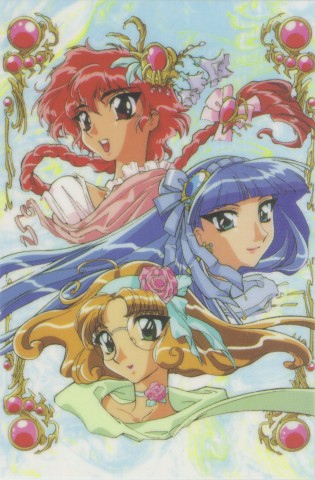 Another
number that is also often used for groups of main characters is three.
It is not unusual for animated series to present a group of three protagonists,
such as Rayearth and Pokemon, or three outstanding characters,
although it is much less usual than groups of five. Number three presents
the same advantages as the number five about the figure of the leader and
the references to a harmonic and stable figure (now a triangle). Three
is considered the number of divinity, of union and completion and is associated
to communication and spirituality. One just has to think of the trinities
found in several religions or the basic family figure (father, mother and
the fruit of this union). Thus, groups of three main characters present
a stronger complicity among their members and a lesser difference in terms
of power and position in hierarchy. The members of such groups are usually
friends and, although there is always a central protagonist, he/she is
not necessarily a leader and coordinator of the group, but rather the link
that unites the other two participants.
Another
number that is also often used for groups of main characters is three.
It is not unusual for animated series to present a group of three protagonists,
such as Rayearth and Pokemon, or three outstanding characters,
although it is much less usual than groups of five. Number three presents
the same advantages as the number five about the figure of the leader and
the references to a harmonic and stable figure (now a triangle). Three
is considered the number of divinity, of union and completion and is associated
to communication and spirituality. One just has to think of the trinities
found in several religions or the basic family figure (father, mother and
the fruit of this union). Thus, groups of three main characters present
a stronger complicity among their members and a lesser difference in terms
of power and position in hierarchy. The members of such groups are usually
friends and, although there is always a central protagonist, he/she is
not necessarily a leader and coordinator of the group, but rather the link
that unites the other two participants.
If a seven-character group
had surprised me, I was really astounded when I found out that there was
still another "digidestined"! I was mainly surprised by the fact that their
group would then have eight people, an even number. Even numbers are considered
"weak" because they don't have a "peak" and are very rarely used in manga
and anime. However, when I examined the symbolism attached to the number
eight I could see some logic about the whole affair.
Number eight can be seen
as the number of those who "have the power". After the search and questioning
endeavored under the number seven, number eight represents the act of "putting
hands to work" and acting in order to get results. As an even number, the
lack of "peak" makes it a stable solid number, even if a bit heavy one.
But this stability is what allows the group to oppose evil in an organized,
coherent way. It doesn't matter anymore who is the leader, everyone understands
his/her responsibility and knows enough about him/herself and the others
to put his/her abilities to the service of the mission of the group: to
restore order in both universes.
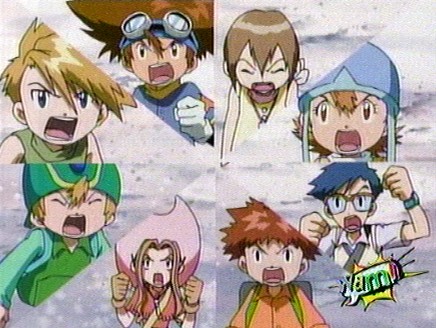
Back to the initial page of Elbereth's Fantasy World
Contact Elbereth! Comments are welcome!